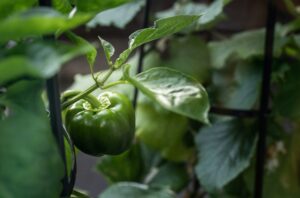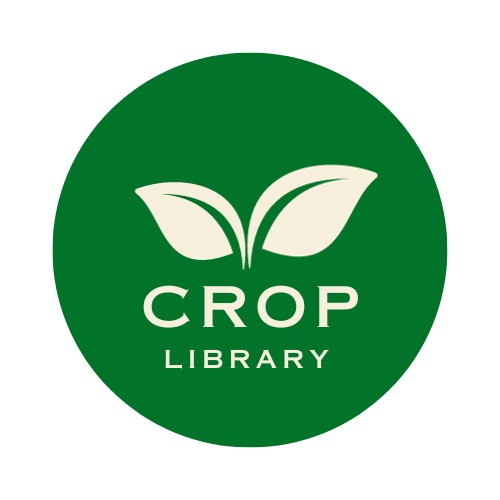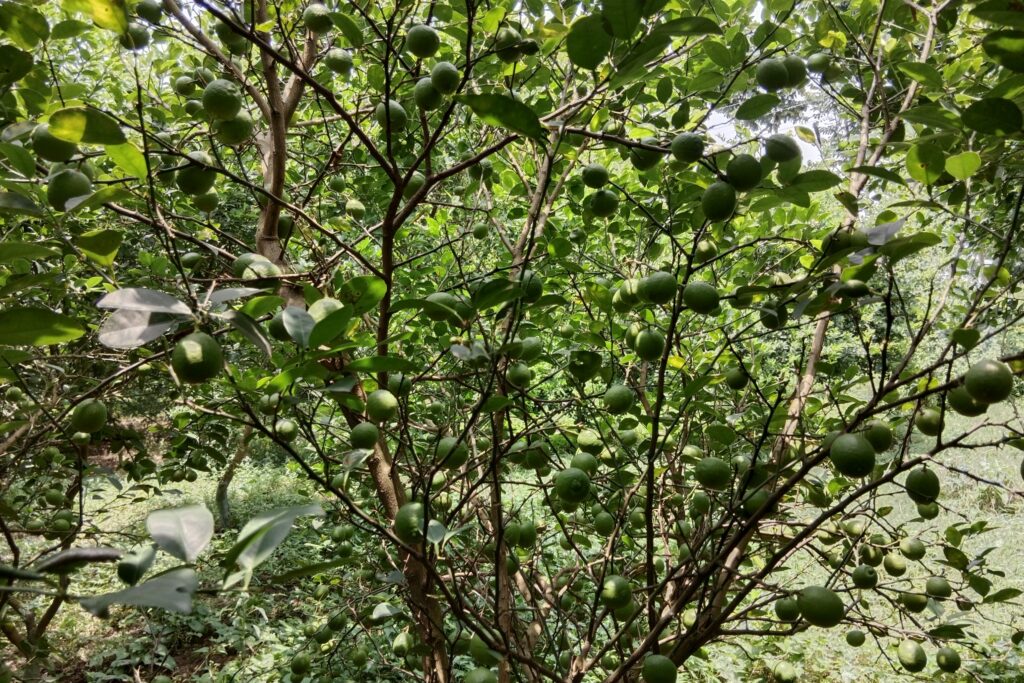
Bell peppers (Capsicum annuum) are highly popular in both home gardens and commercial agriculture due to their versatility in cooking and rich nutritional value. Their cultivation requires management of best fertilizer for capsicum to promote healthy growth and optimal yields. Selecting the right fertilizer can significantly impact the size, taste, and overall quality of the peppers. With proper care, bell peppers offer a robust supply of essential nutrients, including vitamins A, C, E, and B1, as well as minerals like potassium (K), phosphorus (P), and calcium (Ca). They are also rich in antioxidants such as capsaicin, capsanthin, and polyphenols, making them a nutritious addition to diets.
A balanced fertilization strategy is essential for bell pepper cultivation. Over-fertilizing can lead to excessive foliage growth at the expense of flowers and fruit, while insufficient nutrients result in weak plants that struggle to produce healthy blooms and fruits. The key is to provide consistent fertilization in smaller doses, ensuring plants are well-fed without being overwhelmed. Depending on the growth stage, granular or liquid fertilizers can be used. Nitrogen is critical for strong leaf development, phosphorus promotes root and flower growth, and potassium is essential for photosynthesis and fruit quality. By carefully managing these nutrients, growers can enhance yield, flavor, and nutritional value throughout the growing process.
RELATED: Tomato Fertilizer Schedule
8 best Fertilizer for Capsicum
Cattle Manure
Cattle manure serves as an excellent organic fertilizer for peppers and can also be beneficial for herb cultivation, as it is rich in essential nutrients that support pepper plant growth. Additionally, it enhances garden soil texture by improving aeration, allowing roots to penetrate more easily. For optimal result, apply cattle manure at the rate of 2-5 kg per square meter.
Bone meal
Bone meals, which is high in phosphorus, promotes root development and encourages flowering, making it ideal for application at the time of planting.
Nitrogen (N)
Nitrogen is a crucial element for plants as it regulates photosynthesis, promoting foliage production and healthy leafy growth; without leaves, pepper plants would appear odd. While nitrogen is essential for the development of robust leaves and pepper pods, it’s important to note that high nitrogen levels do not necessarily increase flowering. For optimal results, apply NPK 20:20:20 at 70-80 kg per hectare when planting, and use ammonium nitrate as a side dressing at 130 kilograms per hectare.
Phosphorus (P)
Phosphate supplies phosphorus, a vital nutrient that enables plants to harness solar energy, which is essential for the development of strong roots and robust peppers. This key nutrient plays a significant role in both root development and flowering in pepper plants.
Potassium (K)
The final key nutrient is potassium, which is essential for the movement of water and nutrients within plants, facilitating smooth photosynthesis. Essentially, potassium ensures that water and other nutrients flow effectively throughout the plant.
Calcium nitrate
Calcium plays a crucial role in helping other nutrients enter the plant and facilitating enzymatic reactions. It forms calcium pectinate, which bonds the plant’s cell walls together, supporting the cells in both leaves and peppers. A deficiency in calcium or rapid growth of pepper pods can lead to rotting at the bottom of the plant due to collapsing cell walls. Blossom-end rot, a common issue with bell peppers, is primarily caused by calcium deficiency. To prevent this, it’s essential to use calcium-rich fertilizers like calcium nitrate or bone meal, as calcium strengthens cell walls, enhancing the overall quality and shelf life of your peppers.
In addition to preventing blossom-end rot, calcium strengthens the cellular structure of pepper plants, promoting healthy cell walls in both leaves and fruits. It supports the structural and physiological stability of the plant. If your fertilizer lacks calcium, consider adding calcium nitrate or Cal Mag Plus, which are ideal for developing solid buds and blooms. Incorporating calcium-rich fertilizers during planting and throughout the fruiting stage is vital to prevent nutrient deficiencies and ensure healthy growth.
Pseudomonas fluorescens
Pseudomonas fluorescens are effective in suppressing a range of soil-borne pathogens that can affect bell peppers, including those responsible for root rot, damping-off, and wilt diseases. This beneficial bacterium produces antimicrobial compounds that inhibit the growth of harmful fungi and bacteria, helping to protect the plants.
Magnesium Sulfate
Magnesium plays a vital role in the creation of chlorophyll, the green pigment essential for photosynthesis. It aids in the formation of ATP and calcium pectinate, which helps bond cell walls together. With sufficient magnesium, plants can more effectively absorb valuable nutrients like nitrogen and phosphorus, significantly enhancing their ability to produce flowers and peppers. Additionally, magnesium is crucial for enzyme activation and contributes to the development of flavorful, nutrient-rich fruits. To boost magnesium levels, Epsom salt (magnesium sulfate) or magnesium nitrate can be added as organic sources.
Sulfur is primarily recognized for its effectiveness in controlling insects and fungal diseases, but it is also essential for producing amino acids, vitamins, and enzymes. This nutrient plays a critical role in supporting overall plant health and growth, ensuring that plants can thrive and resist various stressors in their environment.
Fertilizer Schedule of Capsicum
When you transplant your bell pepper plants outdoors, it’s crucial to allow them some time to adapt before introducing fertilizer. This adjustment period enables the plants to acclimate to their new soil and the various outdoor conditions they’ll encounter. To minimize stress and promote healthy root growth, it’s recommended to wait about seven to ten days post-planting before applying your first fertilizer dose.
At the time of planting, you can start fertilizing your pepper plants to encourage early root and foliage development. As the plants enter their growth phase, focusing on leaf and height expansion, continue to fertilize every two to four weeks. This regular feeding helps sustain strong growth leading up to the blooming stage, ensuring the plants are well-nourished during this critical development period.
Once the flowers begin to appear, maintain the same fertilization routine while incorporating Calcium Nitrate and Epsom salt to support fruit development. The fertilization process should be executed in four applications, strategically placed in strips at a depth of 10 cm to prevent nutrient loss from evaporation and runoff. The applications include an initial dose at transplanting with essential nutrients, followed by additional doses at specified intervals to ensure balanced nutrient availability throughout the growth cycle.
Here’s a general guideline for fertilizing pepper plants:
Pre-Planting
Soil Preparation
To enhance soil fertility and structure, mix in compost or well-rotted manure.
Base Fertilization
Base fertilization involves applying a balanced fertilizer like 20-20-20, which supplies essential nutrients—nitrogen, phosphorus, and potassium. This application should be done based on soil test recommendations to ensure that plants receive an appropriate nutrient baseline, supporting healthy development from the start.
Seedling Stage
Transplanting
When transplanting, adding a bit of bone meal or starter fertilizer to the planting hole encourages strong root development. This practice helps the seedlings establish more rapidly, improving nutrient absorption and overall plant health from the outset.
Initial Growth
Approximately two weeks after transplanting, apply a balanced fertilizer (20:20:20) or fish emulsion to encourage healthy vegetative growth. This early nutrient boost helps the plants establish well, promoting strong stems and foliage development.
Vegetative Stage
Nitrogen Boost
During the vegetative stage, apply a nitrogen-rich fertilizer, such as ammonium nitrate, every 2-3 weeks to stimulate robust foliage growth. This ensures the plant develops strong leaves essential for photosynthesis, laying the foundation for healthy fruit production later in the growth cycle.
Side-Dressing
Apply ammonium nitrate together with compost as a side-dressing around the base of the plants to sustain optimal nutrient levels throughout the growing season. This combination ensures a steady supply of nitrogen for healthy plant development while improving soil structure and fertility with organic matter from the compost.
Flowering and Fruiting Stage

Phosphorus and Potassium
Switch to a high-phosphorus fertilizer (e.g., 0-52-34) when flowering begins to enhance robust bloom development.
Continued Feeding
Continue fertilizing every 2 to 3 weeks with a balanced or high-potassium fertilizer, such as 0:0:50, to promote fruit development and enhance overall plant health.
FAQs
Q1. How do you increase the size of capsicum fruit?
The following activities for capsicum plants increase the fruit size:
- Balance Fertilizer
Application of balance fertilizer (20:20:20) at the time of transplanting helps to develop healthy plants.
- Moisture
Maintain consistent moisture in the soil, because water stress to plant can reduce the size of fruit.
- Pruning
Pruning excess foliage improves airflow and directs plants energy toward fruit growth.
- Sun light
Ensure that plant is getting full sunlight, plant receiving plenty of sunlight gives bigger size fruit.
- Insect and disease
Control any kind of infestation by insect and disease to get bigger fruit.
Q2. Why are my capsicums tiny?
The following may be the reason:
- Inadequate nutrition
A lack of essential nutrients, particularly nitrogen, phosphorus, and potassium, during crop development can hinder fruit development.
- Poor Pollination
Poor pollination due to extreme weather conditions or due to lack of pollinators results in underdeveloped capsicum.
- Insect infestation
Infestation of insects like aphids, and diseases like fusarium wilt or bacterial wilt may weaken the plants and results in poor fruit development.
- Moisture
Lack of consistent moisture in the soil leads to the development of small fruits.


